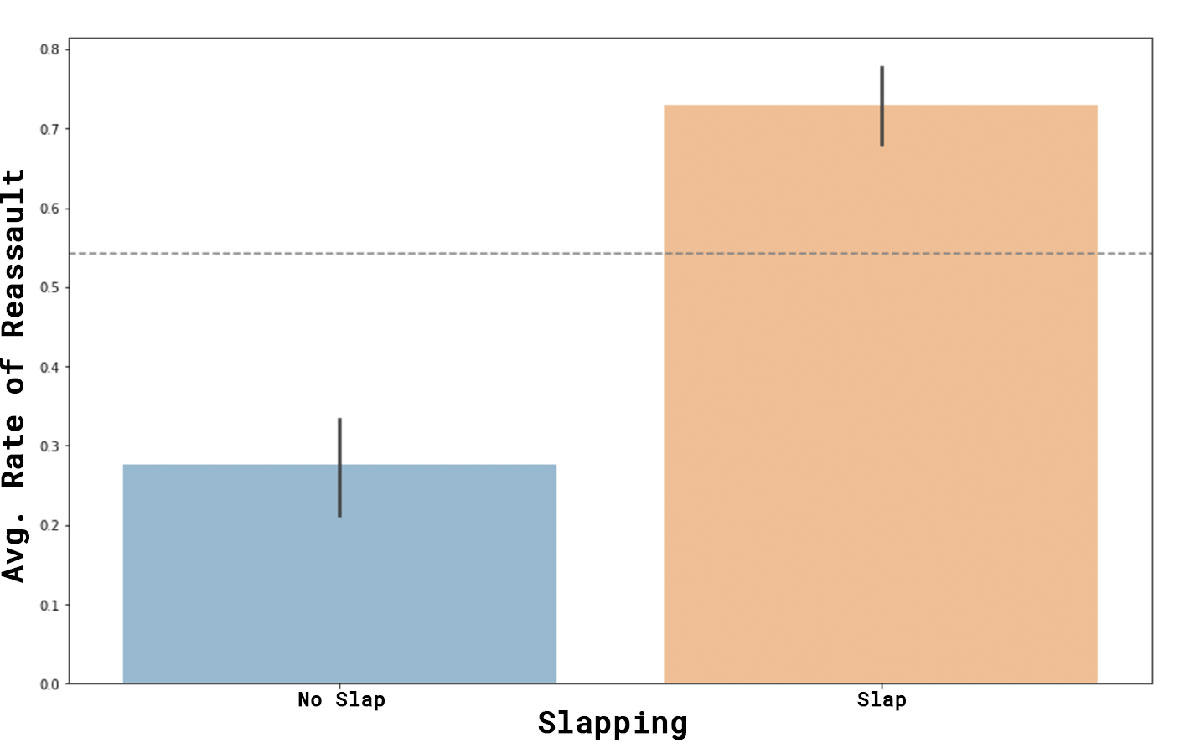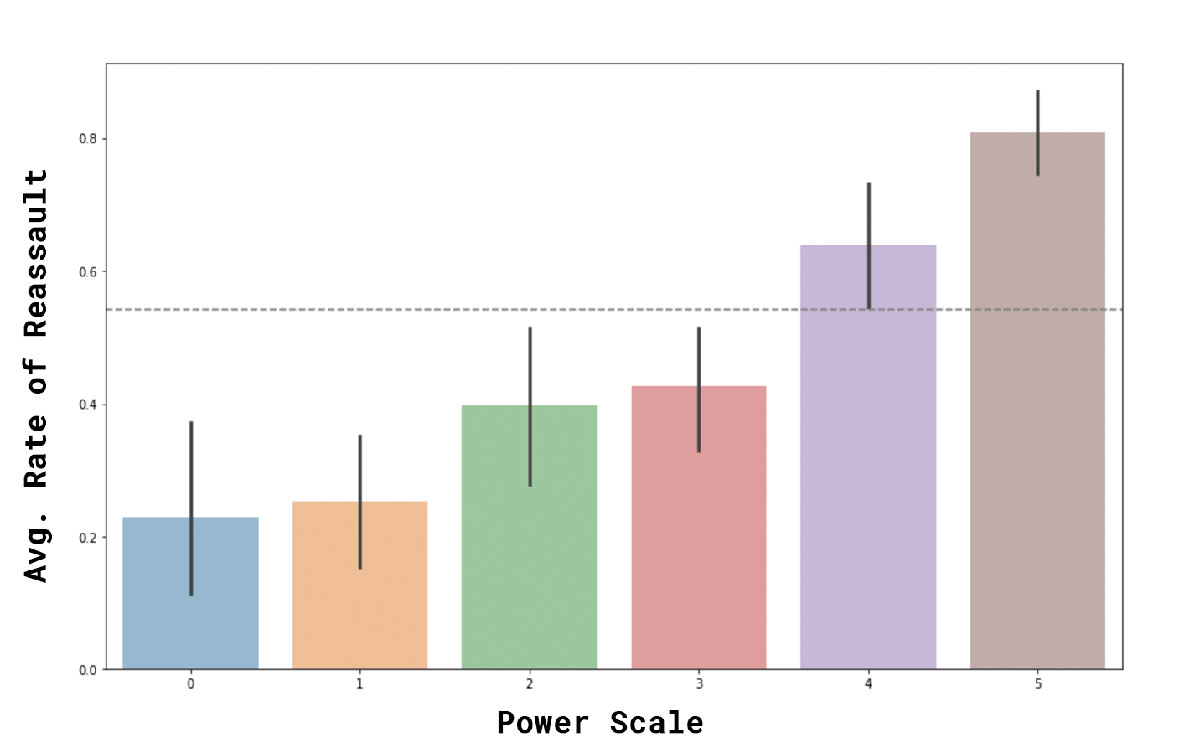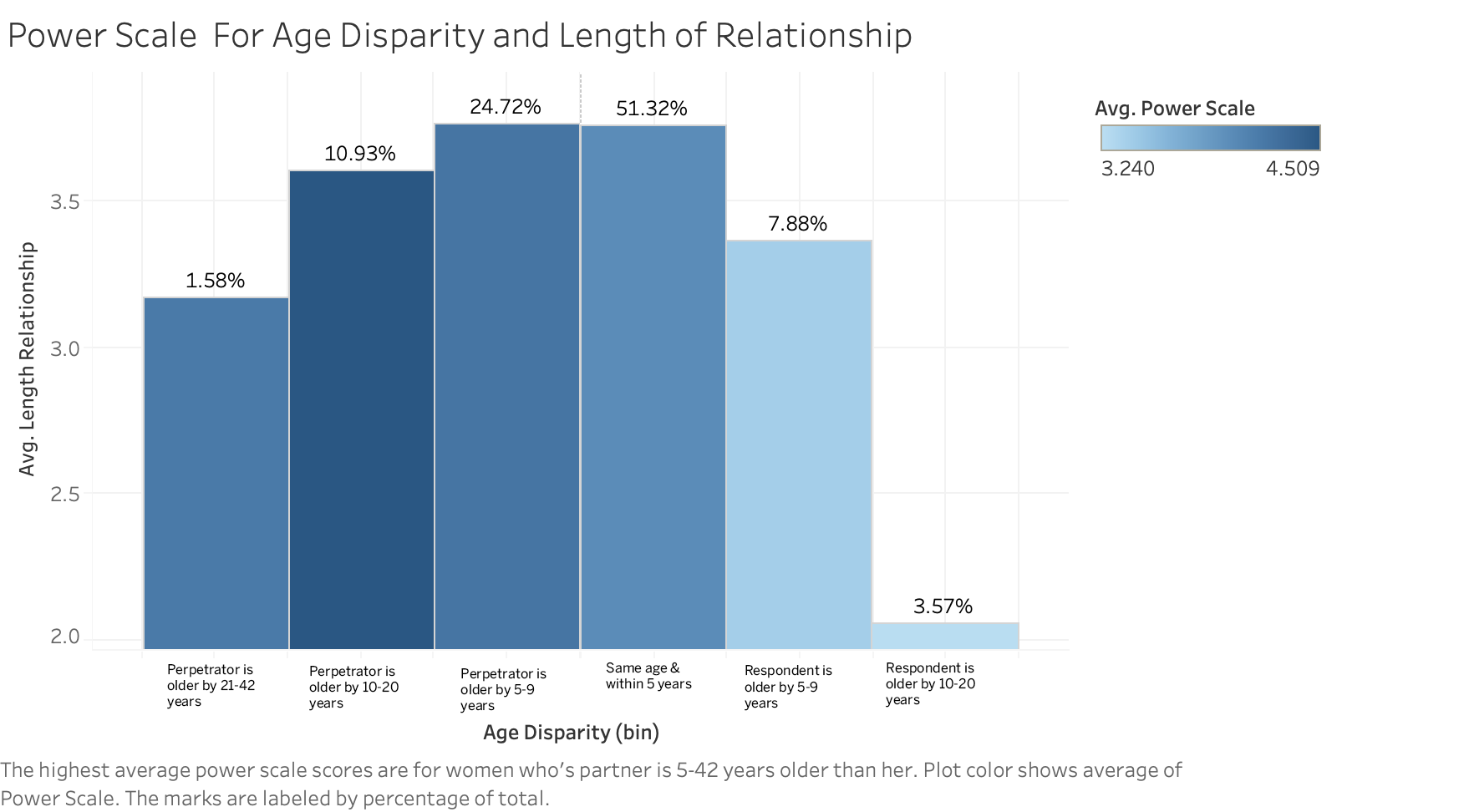Domestic violence and assault are a pervasive and ubiquitous plague that blankets the entirety of the population. Current practrices in the criminal justice system and social work are deficient and lack resources to adequately gauge the level of risk for reassault.
Our target in this project was to take the myriad of survey answers taken across a breadth of inquiries from the Chicago Women’s Health Risk Study and narrow it down to a small, digestible set of minimally invasive questions. These questions could assess whether or not a given individual was at risk of reassault as a means to possible next-steps for protection.
Chicago Women's Health Risk Study, 1995-1998 (ICPSR 3002)
Download Pro-se Protective Order Kit
The correlation between the occurrence of slapping and re-assault is perhaps the most striking observation encountered in this exploration. Here, it can be observed that the average rate of re-assault raises exceptionally, merely by the occurrence of one slapping incident.

The Power scale is an aggregate measure from 0-5 based on the following inquiries:
In the past year, an intimate partner...

Age disparity between perpetrator and respondent:
3: Perpetrator is older by 21-42 years
2: Perpetrator is older by 10-20 years
1: Perpetrator is older by 5-9 years
0: same age & within 5 years
1: Respondent is older by 5-9 years
2: Respondent is older by 10-20 years

The following survey will assess the risk of re-assault on the presumption that the individual filling out this questionnaire has been the victim of an instance of abuse. We encourage honest replies and consideration of the following inquiries to which our model will predict a chance of re-assault as a percent value.